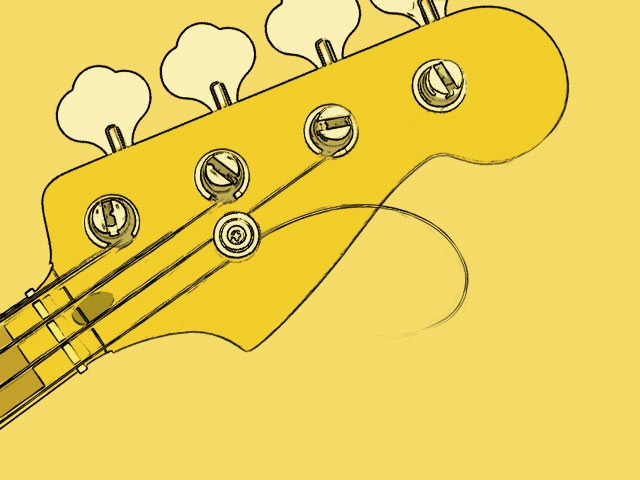- Published Mar 3, 2013 in On Stage
We’ve all been there. It happens at the worst possible time, busts your vibe and looks incredibly un-rockstar. What you do once you hear that ping will define the rest of your performance.
It happens to the best of us. You’ve got your head back, your eyes closed and you’re sweating like a 16 year old girl taking a drivers test. And just when you come up to the really awesome Eddie Van Halen-esque climax to your solo, you hear that dreaded ping as the stainless steel core of your super-cool designer roundwounds shreds right on top of the bridge saddle and the glory you were about to feel as the audience erupted in applause and delight gives way to your mad scurrying around the stage looking for a string winder.
It’s worth mentioning right off the bat that there is absolutely no way to look cool at this point. Any way you slice it, your gear just failed in front of everyone. And no matter who they are, from the sound guy to the bartender to the drummer to your most dedicated fan, is going to be taken out of that sublime moment and back into reality. It’s like accidently walking in on your mother while she’s trying on jeans. There’s no way to avoid the speed bump that’s going to cause.
But take heart: all is not lost. How you handle this situation will define you as a pro or someone with no business being on that stage. Behold, a step-by-step survival guide:
- Don’t panic.
- Don’t try to play through it. The fast release of tension is going to throw every other string out of tune. Let’s not add insult to injury, shall we?
- Remember you’re plugged into a 2000 Watt PA so don’t just yank the cord out. The resulting pop could blow out everyone’s speakers, not to mention ear drums. Sometimes the best way to go is sliding the cable out of the amp input to break the connection.
- If you have a backup instrument, that’s your go-to solution. Pick it up, plug it in, and for god’s sakes make sure it’s in tune before you start playing again.
- If you have to change the string, get yourself away from the rest of the band so they can bring the audience back into the fold without watching you do surgery.
- Only change the broken string. This isn’t the time for scheduled maintenance.
- Once the new string is on, give it an extra stretch to keep it from going out of tune again right away.
- Tune and retune the new string a couple times. You know how new strings can be.
- Slip back into your spot, plug in the guitar first, then push the plug back into your amp.
- DO NOT make a stupid face, jump up and down, distract the other players or try to get the audience’s attention by acting like Joe Joe The Idiot Circus Monkey. The idea is to let the audience enjoy the rest of the song, even if you can’t.
If all goes according to plan, you’ll be able to play it off like one of those things that just happens to rock stars. By the beginning of the next song, all will be forgotten and hopefully your strings will hold up for the rest of the set. To make sure that happens, check out this article on How To Prevent Your Strings From Breaking On Stage.

